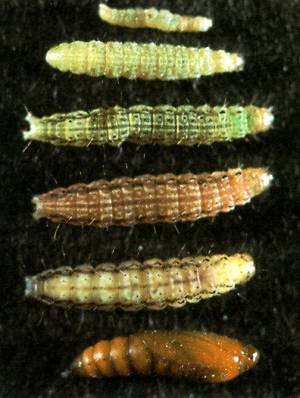|
Orange Mint Moth |
|
Contents |
This section contains information on the orange mint moth in peppermint (see Pike et al. 1986). It has been shown that this insect is not economically important in mint. Larvae feed on terminal growth and leaf buds and may cause increased lateral branching, leaf production, and higher oil yields. Adults of the false celery leaftier and mint root borer also may be present in mint fields at the same time. |



